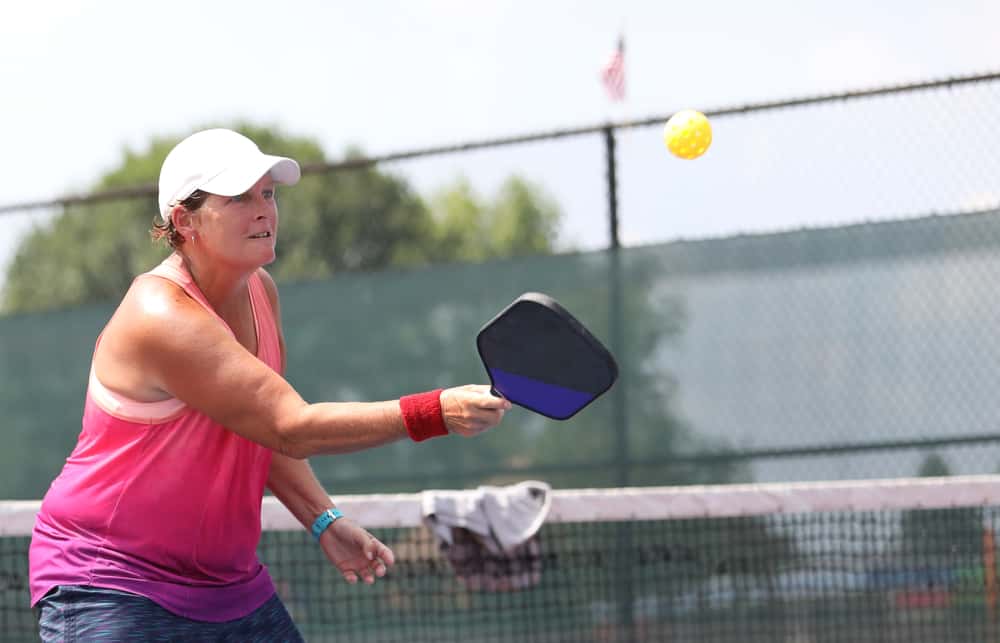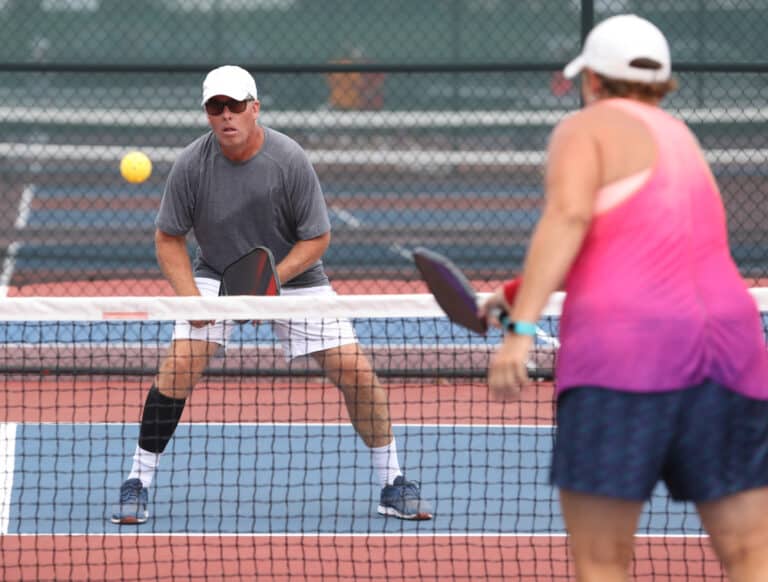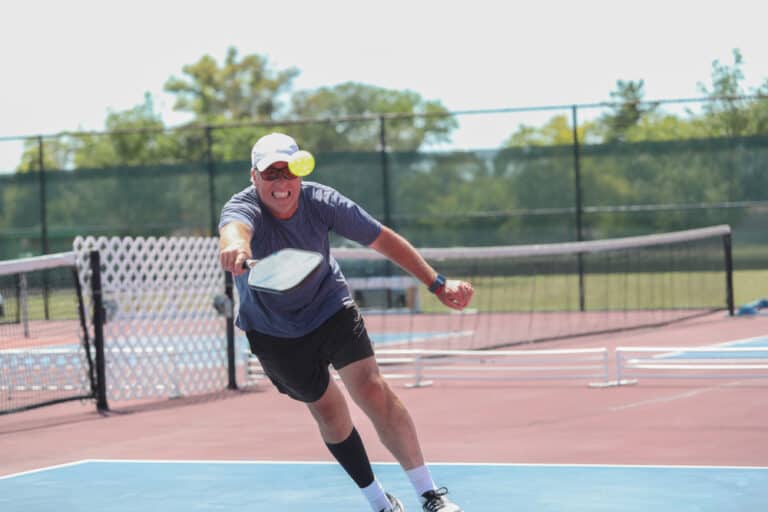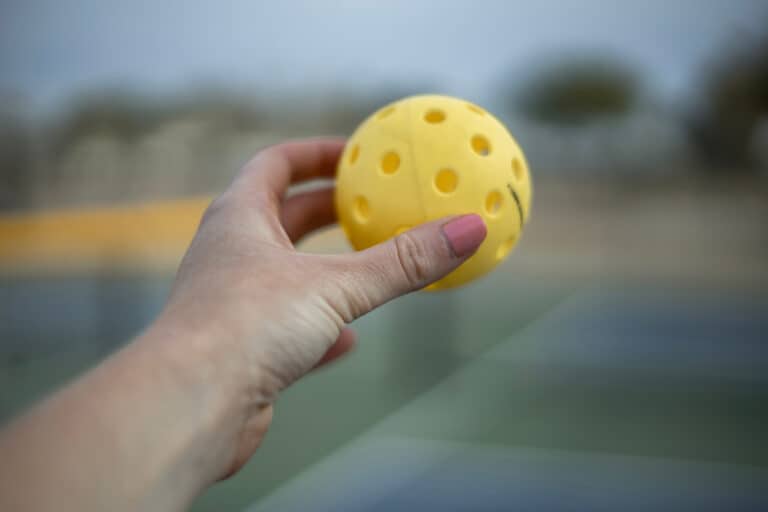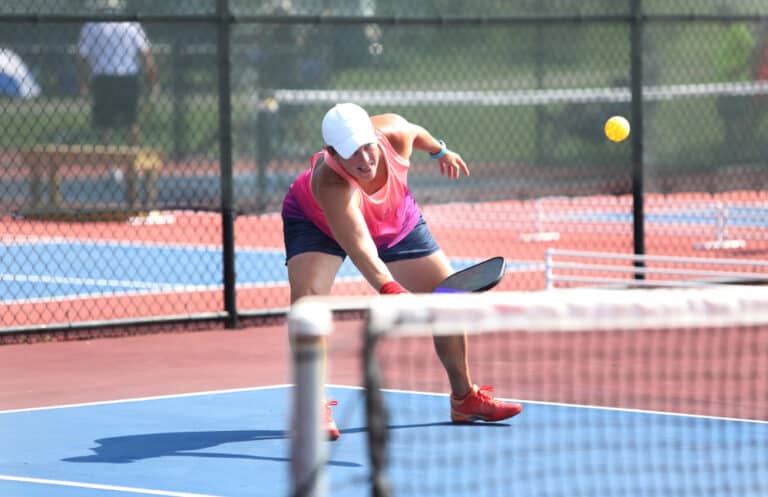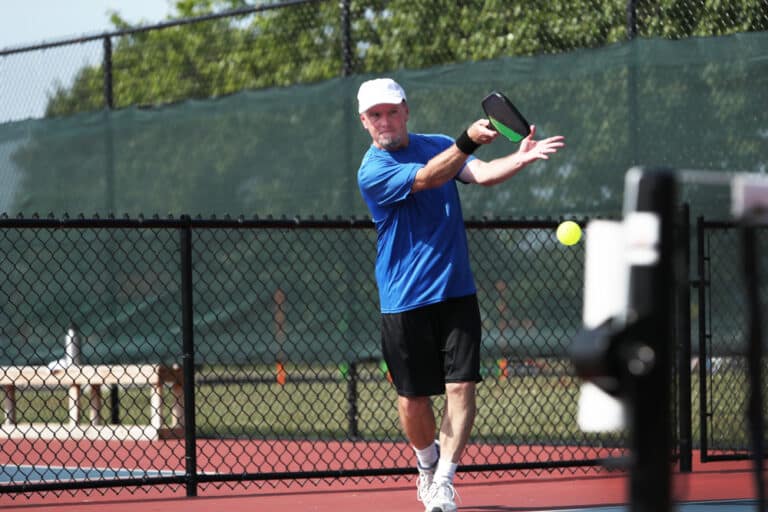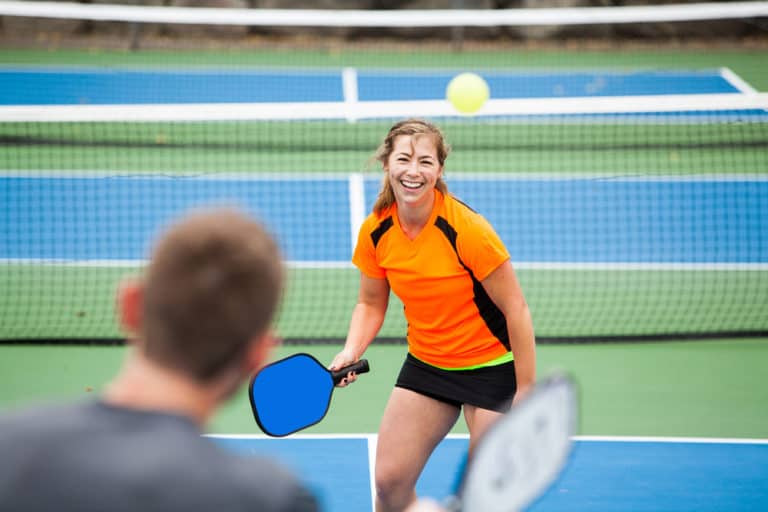What Is The Most Important Shot In Pickleball?
Pickleball is an easy-to-learn sport that can be played both indoors and out. Pickleball begins with one team serving the ball while the receiving team attempts to return the ball deep and prepares to gain control of the net. There is a name for each shot or stroke performed throughout the exchange, and some are more important than others. That said, which shot is the most important in pickleball?
The third shot, often known as the third shot drop, is considered the most critical shot in pickleball. The third shot drop, if executed correctly, might allow you to go up to the net while minimizing your opponent’s advantage—overall resulting in winning or losing points.
All shots are essential, especially the serving shot, since it executes the game. However, the third drop shot may host an element of control over your opponent or even be the fastest way to win over points during a rally. With that in mind, let’s look at what makes the third shot so important and what shots lead up to it.
The Most Important Shots In Pickleball
Trying out different shots is one of the most enjoyable aspects of pickleball. In my years playing pickleball, I’ve seen some excellent plays. As a result, when it comes to skilled athletes in the game, a mastered third drop shot helps maintain your position in serving and boosts your score. Finally, it all revolved around the pickleball court’s non-volley zone (NVZ).
The baseline team has two possibilities when the returning team gains control of the net. The first is to use forehands or backhands to overwhelm the opponent. However, because this method allows the opponent to volley the ball back, it is best used against opponents with lesser volleys.
The second alternative is the third shot drop in the kitchen, which might negate your opponent’s advantage, which is more of a dink than a forehand. As a result, it would be best to consider the following:
- Make sure you are low to the ground.
- Keep the face open and in front of you while holding the paddle in a continental grip.
- Lean forward and keep your head down during impact.
- Do not launch, swing, or accelerate your body upwards too soon.
The third shot drop allows you to hit the ball up and into the kitchen more successfully. This shot should have an arching trajectory, with the shot’s peak on your side of the net. The third shot drop, if executed correctly, might allow you to go up to the net while minimizing your opponent’s advantage.
Add the third shot drop to your warmup routine with your partner to help you master it. It might pave the way for a win on the pickleball court.
So, to better understand the third drop shot, let’s look at the different types of shots and strokes that lead up to the third drop shot. It includes understanding forehand and backhand groundstrokes, dink strokes, volley shots, serving, and returns.
Forehand And Backhand Ground Strokes
When a player returns a ball from midcourt to deep in the court, the forehand and backhand groundstrokes are the primary strokes performed. With a forehand, you hit your ball with the same body side as your dominant hand, whereas with a backhand, you hit the ball with the opposing side of your body.
Your ability to move swiftly and smoothly in all directions on the court determines the effectiveness of your groundstrokes. When the ball leaves the opponent’s paddle, you should observe its trajectory to determine its speed and direction.
Overall, a groundstroke is defined as any shot made after the ball has made a single bounce. Groundstrokes will account for the majority of your shots in pickleball, such as dinks.
Understanding Dink Strokes
A dink is a special form of groundstroke that may only be utilized close or at the net. A dink’s major qualities are that it’s made in the kitchen, incredibly soft, and barely gets over the net. During a pickleball match, you can employ a variety of various sorts of dink strokes. In addition, the third shot drop is also considered to be a long dink.
A soft shot from the NVZ designed to arc over the net and drop either straight across or diagonally crosscourt within the opposing NVZ. An effective dink arcs downward as it passes the net, making it more difficult to return than a power shot.
Because of the steep angle necessary to get the ball over the net, dinks near the NVZ are the hardest to return. One of the best ways to accomplish dink strokes is with patience. Continue to dink your opponent until they make a mistake. There’s a significant likelihood of a volley shot if the ball is struck too high. The dinking motion is light but accurate.
To prevent a hard shot from returning to you, you want the shot to be as soft as possible. However, the part about accuracy is more crucial. Again, the whole point of a dink is to make your opponent make a mistake.
Is your opponent’s backhand or forehand stronger? You’ll want to hit it on the weaker side. That necessitates accuracy. A dinking stroke can be done in any way you wish. Just remember to take a controlled, thoughtful, and focused shot. It necessitates a great deal of agility and precision. As with anything, practice makes perfect.
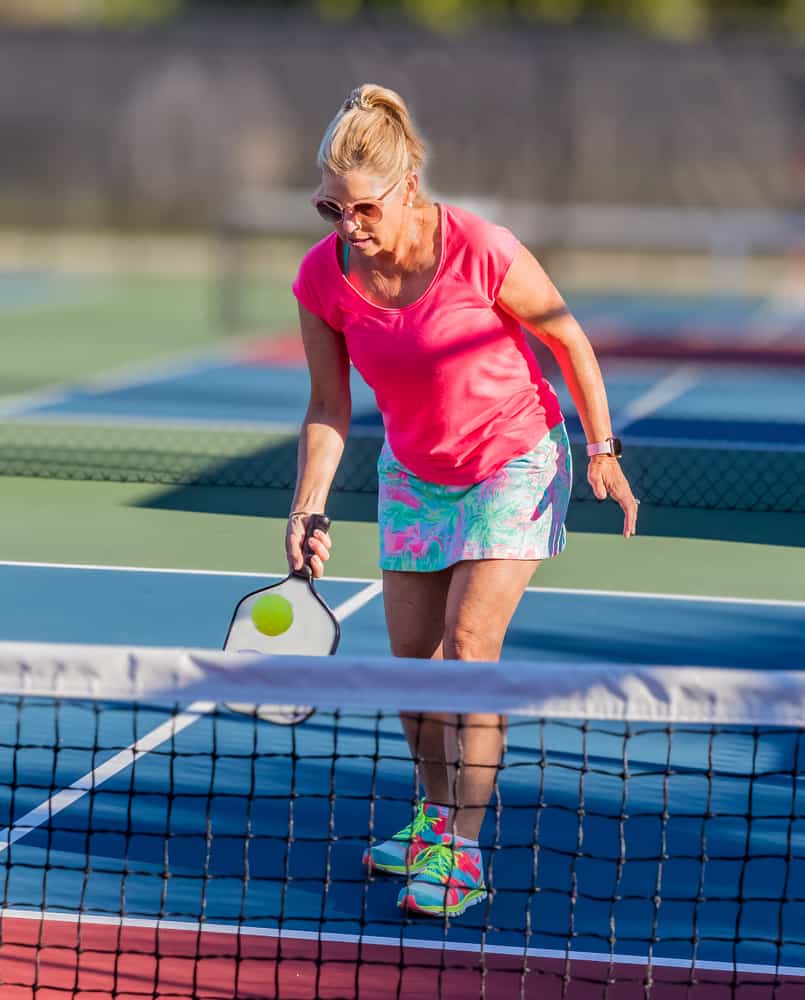
Understanding Volley Shots
A volley is a shot made in the air before the ball bounces. It’s a type of return for a ball that goes fast and near the top of the net. It is performed from just behind the non-volley zone and can be used s an offensive or defensive strategy.
A volley becomes offensive when the ball’s flight is downward, allowing you to apply greater force to the ball. A defensive volley occurs when you make contact with the ball below the height of the net. Your opponents will have the option to return an aggressive stroke since the ball is heading upward (open face).
The Serve And Returns Shot
Because the service brings the ball into play, many believe it to be the most vital technique for novices to learn. You must be able to legally hit the ball over the net into your opponent’s service court, which lies diagonally opposite you, from behind your baseline.
The return shot is the second most crucial skill for novices to learn. Keep those returns in play as much as possible, and avoid making any unforced errors. Moreover, if you don’t do it right the first few times, don’t be too hard on yourself. Remember that you should strike your serve and return shots smarter rather than harder.
How To Improve Your Third Drop Shot
Everyone aspires to master the third shot drop to improve their pickleball game. There are various methods to practice, but perfecting this shot with progressive learning is one of the best methods to achieve this. As a result, I’ll run through the process of improving your third shot drop step by step and explain the practical applications along the way.
- Understand what the third shot drop is. The basic principle of pickleball is who controls the net controls the game. The third shot drop allows you to transition to the net effectively. Furthermore, the third shot drop is nothing more than a long dink.
- Practice dinks. With a teammate, practice dinks strokes with each other from each end of the kitchen over the net.
- Begin to distance yourselves with consistent dinks. Once you’ve mastered consistency and appropriate technique in your dink, go back two steps and repeat the process with a little more force. After taking those initial two steps and gaining confidence and consistency in your stroke, take another two steps back, and you’ll be in the transition region in the middle of the court.
- Add a divider to your court and “shrink” your court. You can do this by reducing the size of the court and playing a regular game. Get a divider and take a few feet away from the back of the court on each end. More serve returns will drop gently in the transition region by shrinking the court. As a result, your long dink is now the third shot drop in a modified game.
- Get used to the swing the deeper you go. You’re employing the same exact pendulum swing as you travel back; the only difference is a greater followthrough. Remember that the peak of the ball gradually slides back with you.
- Begin expanding your court’s baseline. Now that you’ve mastered the modified game with the short court let’s take it to the next level. It is time to move the baseline a little further and keep playing your normal game.
- Now play a full game employing your third shot drop. You’ll be ready for a regular full-court game once you’ve developed consistency at the next level. Don’t forget that the third shot drop is basically a lengthy dink that works on precision, agility, and patience.
3 Common Mistakes Made With A Third Drop Shot
By this point, you probably know how important the third drop shot is and how effective it can be so early into the serve. If done correctly, it allows players to position themselves close to the net to stand a chance of controlling the rally.
However, many people often fall into a situation that prevents them from successfully executing the shot and placing themselves in more dire situations. As a result, let’s take a look at three of the most common mistakes and how to fix them.
1. Not Paying Attention To Your Opponent
Often players employ a slice or a topspin that makes third drop shots more difficult to play. If you’re not focused on your opponent’s movements, you may miss the opportunity for a third drop shot and place yourself into a situation that would favor your opponent.
When you decide on shot selection, it frequently has a lot to do with the feedback your opponent is providing you with throughout the rally. If your opponent gives you a lot of backspin, you will have to adjust your next shot accordingly. So keep a sharp eye on the position or stance they like to frequent to play ticky shots like backspin or topspin shots.
2. Too Much Acceleration On Your Shot
Applying too much force and accelerating or speeding up your swing midway is a common mistake made when players find themselves in the heat of the rally. Keeping track of your wrist movement is critical when performing a third drop shot.
More experienced players explain that they prefer to slightly hinge their wrist when executing the third drop shot. Patience is key when performing that one motion, whereas acceleration defeats the purpose of landing the ball in the kitchen.
Since it is a long dink stroke, players should consider a full motion swing rather than an acceleration when performing the shot since the swing provides the force required to reach the kitchen for further distances.
3. Hitting Your Third Shot Drop Too High
When players hit the third drop shot too high, they tend to shorten their swing as the game progresses, and as a result, they stop short with the paddle inclined upward, resulting in the popup.
When they regularly swing, though, they tend to force the wrist forward somewhat, which causes the ball to be inclined downward more and adds a touch of topspin. And focusing on that followthrough is an easy way to bring yourself back into your usual, calm swing.
Another way of understanding is when you complete your swing for your third drop shot, and instead of following it all the way through, players complete three-quarters of the swing, resulting in the ball launching higher, risking a volley shot return.
So, stopping short on a third drop shot is a common mistake made after a long rally which is why practicing dink shots at different distances is a must to master third drop shots.
Conclusion
Since pickleball is all about who can control the net, the third drop shot is the most important since it plays a role best suited for positioning. Third drop shots are the most important shots in pickleball and are considered one of the most difficult shots to master. Now that you are aware that third drop shots are simply longer dink shots, taking time to practice it at different lengths can improve your game.
If you can master the third drop shot, you will be able to add significant pressure on your opponent and turn the game around with both defensive and offensive strategies.
References
- https://hes.dasa.ncsu.edu/wp-content/uploads/sites/62/2016/08/HESR-255-Course-Pack.pdf
- https://www.youtube.com/watch?v=QDE8hXnpARg&ab_channel=PickleballChannel
- https://usapickleball.org/what-is-pickleball/how-to-play/basics/drop-shots/
- https://www.youtube.com/watch?v=iL3Vkgr1Gq8&ab_channel=PrimeTimePickleball

